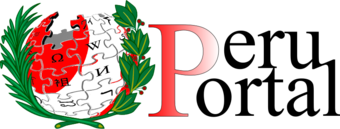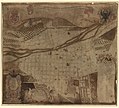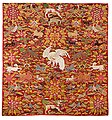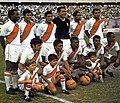Introduction
Peru, officially the Republic of Peru, is a country in western South America. It is bordered in the north by Ecuador and Colombia, in the east by Brazil, in the southeast by Bolivia, in the south by Chile, and in the south and west by the Pacific Ocean. Peru is a megadiverse country with habitats ranging from the arid plains of the Pacific coastal region in the west to the peaks of the Andes mountains extending from the north to the southeast of the country to the tropical Amazon basin rainforest in the east with the Amazon River. Peru has a population of over 32 million, and its capital and largest city is Lima. At 1,285,216 km2 (496,225 sq mi), Peru is the 19th largest country in the world, and the third largest in South America. Peruvian territory was home to several cultures during the ancient and medieval periods, and has one of the longest histories of civilization of any country, tracing its heritage back to the 10th millennium BCE. Notable pre-colonial cultures and civilizations include the Caral–Supe civilization (the earliest civilization in the Americas and considered one of the cradles of civilization), the Nazca culture, the Wari and Tiwanaku empires, the Kingdom of Cusco, and the Inca Empire, the largest known state in the pre-Columbian Americas. The Spanish Empire conquered the region in the 16th century and Charles V established a viceroyalty with the official name of the Kingdom of Peru that encompassed most of its South American territories, with its capital in Lima. Higher education started in the Americas with the official establishment of the National University of San Marcos in Lima in 1551. Peru's population includes Mestizos, Amerindians, Europeans, Africans and Asians. The main spoken language is Spanish, although a significant number of Peruvians speak Quechuan languages, Aymara, or other Indigenous languages. This mixture of cultural traditions has resulted in a wide diversity of expressions in fields such as art, cuisine, literature, and music. (Full article...) Entries here consist of Good and Featured articles, which meet a core set of high editorial standards.
Juan Bielovucic (30 July 1889 – 14 January 1949) was a Peruvian aviator who set several speed and altitude aviation records in 1910–13. He was also the first person to complete a successful powered aircraft crossing of the Alps in 1913, following a 1910 attempt by his friend Jorge Chávez that ended in a fatal crash landing. He established the first aviation school in South America in Lima, Peru. Bielovucic became a colonel of the Peruvian Aviation Corps (PAC) in 1911, joined the Service Aéronautique of the French Army as a volunteer in 1914 and earned the Legion of Honour for his service in World War I. He retired from active aviation in 1920 and returned to Peru where he became the lieutenant commander of the PAC Reserve. He was also active with the French Resistance during World War II. In Croatia, he is regarded as the first Croatian aviator. (Full article...) Selected image Photo credit: United States Navy
BAP Carvajal (FM-51) is the first out of four Carvajal-class frigates ordered by the Peruvian Navy in 1973. It was built by the Italian shipbuilder Cantieri Navali Riuniti at its shipyard in Riva Trigoso, Genoa. Its commissioning was delayed until December 23, 1979 due to delays in equipment deliveries by some subcontractors. The Carvajal is named after Vice Admiral Melitón Carvajal (1845–1935) who fought in the War of the Pacific. (more...) Selected battleThe Cenepa War (January 26 – February 28, 1995), also known as the Alto Cenepa War, was a brief and localized military conflict between Ecuador and Peru, fought over control of a disputed area on the border between the two countries. The indecisive outcome of the conflict — with both sides claiming victory — along with the mediation efforts of the United States of America, Brazil, Argentina, and Chile, paved the way for the opening of diplomatic negotiations that ultimately led to the signing of a definitive peace agreement in 1998, putting an end to one of the longest territorial disputes in the Western Hemisphere. (more...) In this month
General imagesThe following are images from various Peru-related articles on Wikipedia.
Selected article -Machu Picchu is a 15th-century Inca citadel located in the Eastern Cordillera of southern Peru on a 2,430-meter (7,970 ft) mountain ridge. Often referred to as the "Lost City of the Incas", it is the most familiar icon of the Inca Empire. It is located in the Machupicchu District within Urubamba Province above the Sacred Valley, which is 80 kilometers (50 mi) northwest of Cusco. The Urubamba River flows past it, cutting through the Cordillera and creating a canyon with a tropical mountain climate. In reference to the site's name, for most English or Spanish speakers, the first 'c' in Picchu is silent. In English, the name is pronounced /ˌmɑːtʃuː ˈpiːtʃuː/ MAH-choo PEE-choo or /ˌmætʃuː ˈpiːktʃuː/ MATCH-oo PEAK-choo, in Spanish as [ˈmatʃu ˈpitʃu] or [ˈmatʃu ˈpiɣtʃu], and in Quechua (Machu Pikchu) as [ˈmatʃʊ ˈpɪktʃʊ]. The Inca civilization had no written language and following the first encounter by the Spanish soldier Baltasar Ocampo, no Europeans are recorded to have visited the site from the late 16th century until the 19th century. As far as historical knowledge extends, there are no existing written records detailing the site during its period of active use. The names of the buildings, their supposed uses, and their inhabitants, are the product of modern archaeologists based on physical evidence, including tombs at the site. Machu Picchu was built in the classical Inca style, with polished dry-stone walls. Its three primary structures are the Temple of the Sun, the Temple of the Three Windows, and the Intihuatana. Most of the outlying buildings have been reconstructed in order to give visitors a better idea of how they originally appeared. By 1976, 30 percent of Machu Picchu had been restored and restoration continues. Most recent archaeologists believe that Machu Picchu was constructed as an estate for the Inca emperor Pachacuti (1438–1472). The Incas built the estate around 1450 but abandoned it a century later, at the time of the Spanish conquest. According to the new AMS radiocarbon dating, it was occupied from c. 1420–1532. Historical research published in 2022 claims that the site was probably called Huayna Picchu by the Inca people themselves, as it exists on the smaller peak of the same name. (Full article...)Did you know (auto-generated) -
CategoriesRelated portalsSelected quote -
Peruvian diplomat Javier Pérez de Cuéllar 1920–...
Basic facts & figuresMore did you know...
Peru TopicsRecognized content
Featured articlesFeatured listsGood articles
WikiProjectsThings you can do
New articlesThis list was generated from these rules. Questions and feedback are always welcome! The search is being run daily with the most recent ~14 days of results. Note: Some articles may not be relevant to this project.
Rules | Match log | Results page (for watching) | Last updated: 2024-07-02 21:31 (UTC) Note: The list display can now be customized by each user. See List display personalization for details.
Associated WikimediaThe following Wikimedia Foundation sister projects provide more on this subject:
Discover Wikipedia using portals | |||||||||||||||


















































